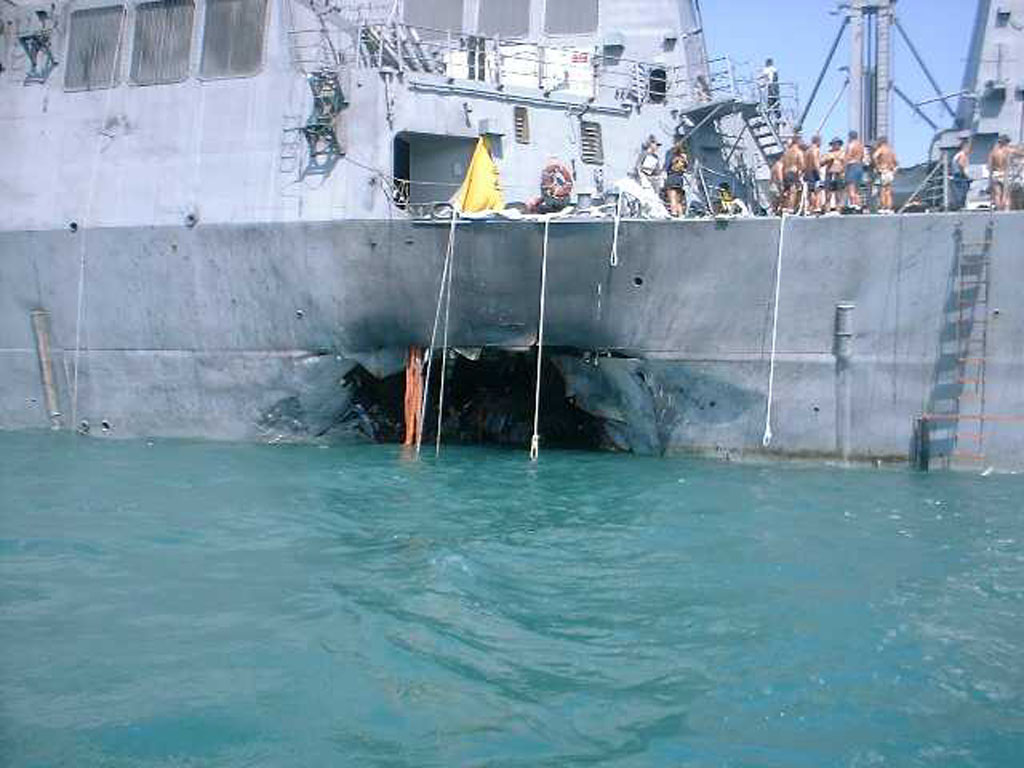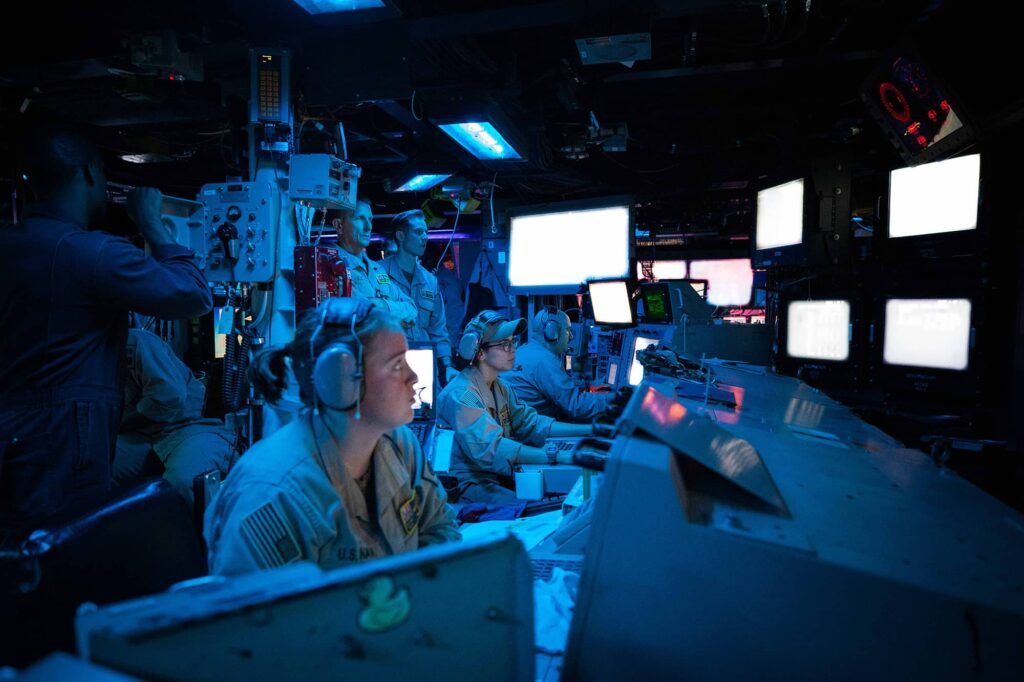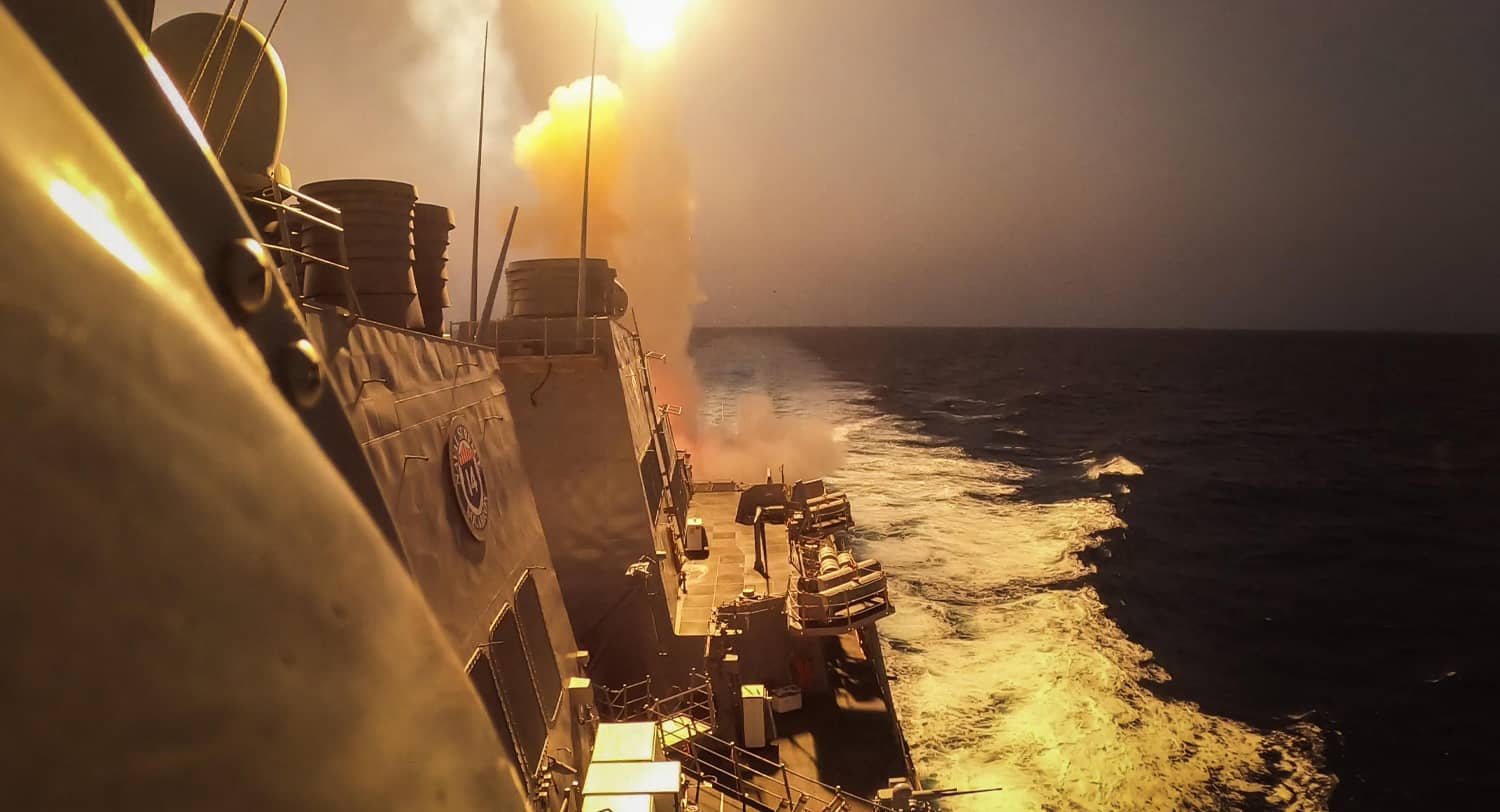Recent events in the transit lanes of the Red Sea have underscored the need for international action to restore freedom of navigation for commercial shipping traffic. Attacks on commercial ships by the Iranian proxy Houthi regime in Yemen have become a daily occurrence, not seen since Iran’s attacks on oil tankers in the Gulf from 1984 to 1988.
In December 2023, the Danish shipping line Maersk placed a moratorium on transit through the Red Sea until the situation is rectified. Other shippers followed suit and are pursuing alternative routes around the Cape of Good Hope in Africa, increasing transit times, burning thousands more gallons of fossil fuels and eventually passing billions of dollars in additional costs onto consumers worldwide.
US Navy destroyers have mitigated some of the Houthi attacks by downing incoming missiles or attack drones. The performance of our ships and sailors has been commendable, but simply knocking down incoming attacks will not solve the crisis. More decisive action is required to go after the source of the problem. The December 18 announcement by Secretary of Defense Lloyd Austin of the formation of Operation Prosperity Guardian, an international mission to counter these attacks, is a good first step. But will it have the authority and military capacity to eradicate the source of the problem? As of this writing in late December, only the UK and Greece have contributed vessels to this US-led mission (though others have pledged to contribute personnel). France and Italy have said their vessels in the Red Sea will remain under national not joint command.
Red Sea threats are not a new problem. On October 12, 2000, the USS Cole was attacked while taking on supplies at anchor off the country of Yemen. Al-Qaida killed 17 US Navy personnel and wounded 37 more and since then there has been a dark shadow over ships transiting the Bab al-Mandeb and the Red Sea. No retaliatory action was taken to root out and destroy al-Qaida and one year later, on September 11, 2001, America suffered the most debilitating attack on its sovereign territory since Pearl Harbor in December 1941. The story of the USS Cole is chronicled in the book, Front Burner, by its commanding officer and my Naval Academy classmate, Commander Kirk Lippold.
In the opening paragraphs of his book, Lippold declares:
The attack on USS COLE was an act of war. It was an inexcusable intelligence failure on the part of the U.S. government. Sadly, neither the Navy nor the nation did anything to respond and the wheels of the nation’s destiny were set into motion, culminating in the attacks of September 11, eleven months later.
In the epilogue, Lippold writes that he and the families of the USS Cole took some solace in the demise of Osama bin Laden on May 1, 2011, but that other terrorist groups have filled the void left by a weakened al-Qaida. On October 1, 2016, the former US Navy ship Swift, operated by the United Arab Emirates, was struck by an Iranian C-802 cruise missile fired by Houthi rebels. Shortly thereafter, the USS Mason engaged more Houthi missiles in the Red Sea with no damage to US personnel.

Following the 2016 exchanges, the Houthis were distracted by a prolonged ground war with Saudi Arabia and the world turned a blind eye to threats in the Red Sea. But on January 30, 2017, the Houthis attacked a Saudi Arabian frigate with an unmanned drone that caused significant damage to the ship. Since this strike, which was left unchecked, the Houthis have stockpiled an arsenal of Iranian-supplied missiles and drones and improved their tactics, techniques, and procedures.
Since the deployment of US naval forces to the region after the October 7 attack on Israel, US guided missile destroyers have engaged drones and missiles presumably aimed at both the southern Israeli port of Eilat and at merchant ships in the Red Sea. On October 19, the destroyer USS Carney shot down four land attack cruise missiles and 15 drones using SM-2 missiles and her 5-inch gun. On November 15, the destroyer USS Thomas Hudner shot down one Houthi drone and on 23 November the Hudner again engaged and shot down multiple drones.
On November 27, the destroyer USS Mason pursued and captured presumed Houthi pirates who had attempted to take over a merchant ship named Central Park. Two missiles were fired by the Houthis near Mason but did no damage. Mason is no stranger to Houthi missile attacks, having shot down Houthi missiles in 2016. On December 16, Carney destroyed 14 drones in one 24-hour period.
The success of these engagements can be attributed in part to improved training for US Navy personnel since the tragic collisions of USS Fitzgerald and USS McCain in 2017. The recommendations of the Navy’s Comprehensive Review of these incidents accelerated modernization of existing platforms and improved curriculum and standards in Navy Training Commands.

The Aegis combat system, in its latest configuration, enables a ship to track hundreds of air and surface targets and destroy them based on their level of threat to both the Aegis ship itself and an entire naval formation, and beyond. Aegis is an early form of artificial intelligence with an automatic mode enabling the ship to engage and destroy targets until it is out of ammunition, without the need of human intervention. Aegis vessels can also conduct anti-ballistic missile defense if so armed and provide air and sea control support over vast regions. Furthermore, the Navy has created a cadre of subject matter experts, Warfare Tactics Instructors, a “train the trainer” concept that sends exceptional officers to ships to train others. Unlike the hapless Russian cruise Moskva that was surprised and sunk by two Ukraine Neptune cruise missiles, forward deployed US warships have demonstrated a capability against multiple missile and drone targets.
More recently, European forces have also taken part in integrated air and missile defense in the Red Sea. On December 11, the French frigate FS Languedoc shot down two Houthi drones with Aster surface-to-air missiles. On December 16, the British warship HMS Diamond shot down a drone with its Sea Viper system.
Thus far, the Department of Defense has been circumspect about how Operation Prosperity Guardian will be executed. Presumably, warships will escort tankers, bulk carriers, and container ships through the Red Sea. What rules of engagement will be in effect? Will we go after those firing missiles and launching attack drones? One thing is certain: if we do not eliminate the source of these threats, they will continue. Until this point, there have been no deaths of civilian mariners: but our luck will eventually run out. Definitive action on Houthi launch sites is unavoidable. Let’s not delay the inevitable.



